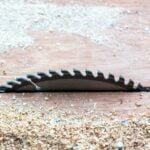Paint is a commonly used element in home improvement projects, but sometimes it can be an unwelcome addition to stained woodwork. Whether you’re dealing with accidental spills or previous owners’ choices, the need to remove paint from stained woodwork may arise.
Not only does paint on stained woodwork detract from its natural beauty, but it can also compromise the integrity of the wood itself. In this article, we will explore various methods and techniques for safely and effectively removing paint from stained woodwork, restoring its original charm and elegance.
When it comes to paint removal, having the proper tools and materials is crucial for achieving successful results. The wrong tools or inadequate preparation can lead to damage to the wood surface or ineffective paint removal.
Before diving into the various techniques for removing paint, it is essential to understand which tools and materials are needed for each method. By equipping yourself with the right resources, you can ensure that your paint removal process will be efficient and produce satisfactory outcomes.
However, before even considering which method of paint removal to use, it is important to assess the condition of the stained woodwork. The approach for removing fresh wet paint may differ significantly from tackling old dried-on layers.
Taking stock of the type and condition of the paint on your stained woodwork will help you determine which technique or combination of methods would be most effective in your specific situation. By tailoring your approach based on an accurate assessment, you increase your chances of achieving the desired results without causing any further damage to the woodwork itself.
In this comprehensive guide, we will delve into various methods for removing paint from stained woodwork. We will cover both chemical strippers and mechanical techniques such as sanding, scraping, and heat gun application.
Additionally, we will provide step-by-step instructions for each method along with tips for tackling stubborn spots and stains on detailed woodwork surfaces. With proper execution and patience throughout each step of the process, you will be able to successfully eliminate paint from your stained woodwork and restore it to its original beauty.
Understanding the Importance of Proper Tools and Materials for Paint Removal
Properly removing paint from stained woodwork requires the use of the right tools and materials. Using the wrong tools can lead to damage to the wood and make the paint removal process more difficult. It is important to understand the importance of using proper tools and materials to ensure a successful and efficient paint removal process.
One of the key tools needed for paint removal from stained woodwork is a paint scraper. A good quality scraper with a sharp blade can help remove layers of old paint effectively. It is important to avoid using metal scrapers on delicate wood surfaces as they can cause scratches. Instead, plastic or wood scrapers are recommended for this purpose.
In addition to a scraper, sandpaper is another essential tool for paint removal. Sandpaper helps in smoothing out rough spots after scraping off the loose paint. Different grits of sandpaper can be used depending on the condition of the wood and the desired finish. Coarse grit sandpaper (60-80) can be used for initial paint removal, while finer grits (120-220) are suitable for smoothing out surfaces.
Another important tool for effective paint removal is a heat gun. Heat guns produce hot air which softens the painted surface, making it easier to scrape off. They are especially useful for removing multiple layers of old paint but should be used with caution to avoid scorching or damaging the wood.
Aside from tools, using proper materials is also crucial in ensuring successful results when removing paint from stained woodwork. One such material is a chemical stripper, which can make the paint soft and easy to scrape off. Before using any chemical stripper, it is important to follow safety instructions and wear appropriate protective gear such as gloves and goggles.
Understanding how to use these proper tools and materials will greatly contribute to achieving optimal results when removing paint from stained woodwork. By using scrappers, sandpaper, heat guns, and chemical strippers correctly, individuals can efficiently remove paint without causing damage to the wood surface.
Assessing the Condition of the Stained Woodwork to Determine the Best Approach
When it comes to removing paint from stained woodwork, it is essential to assess the condition of the woodwork before choosing a method for paint removal. This step is crucial as it helps determine the best approach that will effectively remove the paint without causing damage to the underlying stained surface.
Evaluating the Type of Stain
Before beginning any paint removal process, it is important to identify the type of stain used on the woodwork. This information will help you determine which method of paint removal should be used. If you are unsure about the type of stain, consult a professional or do some research to ensure you choose an appropriate technique that will not harm or discolor the woodwork.
Some stains, such as oil-based stains, may require more aggressive methods for effective paint removal. On the other hand, water-based stains are usually more forgiving and can be removed using gentler techniques. Taking note of these differences will help you select a method that will successfully remove the paint while preserving and protecting the original stain.
Examining Surface Damage
Another important factor when assessing stained woodwork is to examine its overall condition and any existing damage. Look for signs of cracks, chips, or dents in the woodwork that may have occurred over time. It is crucial to address these issues before attempting any paint removal process.
For damaged areas, consider repairing them first before proceeding with paint removal. Cracks and chips can be filled with wood putty or epoxy resin, while scratches can be sanded down gently using fine-grit sandpaper. By taking care of these minor repairs beforehand, you ensure that your final result will be free from imperfections and provide a smooth canvas for further restoration or refinishing.
Determining Paint Thickness
Lastly, evaluate how thickly the paint has been applied to the stained woodwork. Understanding the thickness will help you determine which method of paint removal is most suitable. Thickly applied paint may require a more aggressive approach such as a chemical paint stripper or scraping, while thinner layers of paint can often be removed with less invasive methods like sanding or heat guns.
By properly assessing the condition of the stained woodwork, you can choose the best approach for removing paint without causing damage to the underlying wood surface. Taking into account factors such as the type of stain, existing surface damage, and paint thickness will ensure that your efforts result in successful and safe paint removal.
Preparing the Area
When removing paint from stained woodwork, it is essential to properly prepare the surrounding area to prevent any damage or unwanted mess. By taking the time to cover and protect nearby surfaces and floors, you can ensure a smoother and safer paint removal process.
Gather the necessary supplies
Before you begin, gather all the necessary supplies for covering and protecting nearby surfaces. You will need drop cloths or plastic sheets, painter’s tape, masking paper, and a sturdy ladder if needed. Additionally, make sure to wear protective gear such as gloves, goggles, and a dust mask for your safety.
Cover delicate surfaces
Start by covering delicate surfaces that are near the stained woodwork. This includes furniture, fixtures, electrical outlets, light switches, and other objects that could be damaged by paint strippers or debris. Use drop cloths or plastic sheets to fully cover these items.
Protect the floor
Next, protect the floor by laying down drop cloths or plastic sheets. Ensure that they extend beyond the area you’ll be working on to catch any stray drips or splatters. If you’re working on a larger project or in a high-risk area like a hallway, consider using masking paper instead of drop cloths for better protection against potential spills.
Secure coverings with painter’s tape
Once everything is covered adequately, use painter’s tape to secure the drop cloths or plastic sheets in place. Apply the tape along edges and corners to prevent them from shifting during paint removal.
By taking these precautionary measures to cover and protect nearby surfaces and floors, you can minimize the risk of accidental paint damage while ensuring an easier cleanup once the paint removal process is complete. Remember that proper preparation is crucial before moving on to more intensive methods of removing paint from stained woodwork.
Utilizing Chemical Paint Strippers
Chemical paint strippers can be highly effective in removing paint from stained woodwork, but it is important to follow proper steps to ensure successful results. Here is a step-by-step guide on how to utilize chemical paint strippers for effective paint removal:
- Prepare the area: Before applying the chemical stripper, it is crucial to prepare the surrounding area. Remove any nearby furniture or objects and cover floors, carpets, and other surfaces with drop cloths or plastic sheets to protect them from drips or spills.
- Choose the right stripper: There are various types of chemical paint strippers available on the market, so it is essential to select one that is suitable for your specific project. Consider factors such as the type of paint you are removing and the material of the woodwork.
- Apply the stripper: Put on protective gloves and goggles before starting. Using a brush or an old cloth, apply an even layer of the stripper onto the painted surface. Make sure to follow the manufacturer’s instructions regarding application thickness and drying time.
- Allow dwell time: After applying the stripper, allow sufficient time for it to penetrate and loosen the paint. This dwell time can vary depending on the product used, so refer to the instructions provided by the manufacturer.
- Remove softened paint: Once the dwell time has elapsed, use a scraper or putty knife to gently remove softened paint from the woodwork surface. Work in small sections at a time, being careful not to damage or gouge into the wood.
- Repeat if necessary: Some stubborn layers of paint may require multiple applications of stripper and scraping to completely remove them. If needed, repeat these steps until all traces of paint have been removed.
- Clean up: After successfully removing all the paint, thoroughly clean and rinse off any remaining residue from the woodwork surface using water or a recommended solvent cleaner as specified by the manufacturer.
By following these steps and using the appropriate chemical paint stripper, you can effectively remove paint from stained woodwork. However, always prioritize safety by wearing protective gear and ensuring the area is well-ventilated during the paint removal process.
Mechanical Methods for Paint Removal
Mechanical methods for paint removal are an effective option when dealing with stubborn paint on stained woodwork. These methods include sanding, scraping, and heat gun techniques, each with its own advantages and considerations.
Sanding is a popular method for removing paint from stained woodwork. To begin, gather the required supplies: coarse-grit sandpaper (around 80-100 grit), a sanding block or orbital sander, and safety gear such as goggles and a dust mask. Start by testing the sandpaper on a small inconspicuous area to ensure it doesn’t damage the wood.
Then, begin sanding in the direction of the wood grain, applying consistent pressure. Continue until all the paint has been removed, frequently changing or replacing the sandpaper as needed for best results.
Scraping is another mechanical method that can effectively remove paint from stained woodwork. This technique is particularly useful for intricate or detailed areas where sanding may not be as effective. Begin by selecting an appropriate scraping tool, such as a putty knife or scraper with a flat edge.
Hold the scraping tool at a low angle to avoid damaging the underlying wood surface and apply gentle pressure while moving the tool in one direction to scrape off the paint. Take care not to gouge or scratch the wood while scraping.
Heat gun techniques involve using heat to soften and loosen the paint before removing it. This method requires caution as excessive heat can damage both the wood and surrounding materials. Start by wearing protective gloves and eyewear while also ensuring good ventilation in your work area.
Hold the heat gun several inches away from the painted surface and constantly move it back and forth to prevent scorching or burning. Once you see bubbles forming on top of the paint, use a scraper to carefully lift off the softened paint.
Removing Stubborn Paint Spots and Stains from Detailed Woodwork
When attempting to remove paint from stained woodwork, it is common to encounter stubborn paint spots and stains that are difficult to eliminate using traditional methods. These areas may require some additional techniques and specialized tools to ensure effective removal without causing damage to the woodwork.
One effective method for removing stubborn paint spots is by using a razor or putty knife. Gently scrape the surface of the paint spot, being careful not to dig into the woodwork. This method can be particularly useful for small or localized areas where precision is required.
For larger areas or more intense stains, chemical solvents such as mineral spirits can be used. Apply a small amount of solvent onto a clean cloth or rag and gently rub the stain in circular motions. As you do this, you should notice the paint starting to dissolve and lift off the woodwork. Be sure to follow all safety precautions and guidelines provided by the manufacturer when working with chemical solvents.
If the above methods do not fully remove stubborn paint spots or stains, try using fine-grit sandpaper. Sanding should always be done carefully and lightly in order to avoid damaging the stained wood beneath the paint. Begin with a low grit sandpaper (such as 120) and gradually work your way up to higher grits (such as 220). Remember to sand along with the grain of the wood for best results.
In cases where none of these methods work, it might be necessary to consult a professional who specializes in restoring woodwork. They will have access to more advanced techniques and equipment that can safely remove stubborn paint spots without compromising the integrity of the stained wood.
Overall, removing stubborn paint spots and stains from detailed woodwork requires patience, caution, and attention to detail. By utilizing these techniques and tools effectively, you can achieve a clean and restored surface that showcases the beauty of your stained woodwork once again.
| Techniques | Description |
|---|---|
| Razor or Putty Knife | Gently scrape the surface of the paint spot, being careful not to dig into the woodwork. |
| Chemical Solvents | Apply a small amount of solvent onto a clean cloth or rag and gently rub the stain in circular motions. |
| Sanding with Fine-Grit Sandpaper | Sand lightly using low grit sandpaper and gradually work your way up to higher grits, always sanding along with the grain of the wood. |
Cleaning and Restoring the Woodwork Surface After Paint Removal
Cleaning and restoring the woodwork surface is a crucial step after paint removal to ensure a smooth and polished finish. Once the paint has been stripped off, there may be residual chemicals, dust, or debris left behind. Additionally, the woodwork itself may need some attention to restore its natural beauty and strength.
To begin the cleaning process, start by wiping down the woodwork with a clean cloth dampened with warm water. This will remove any remaining chemical residue from the paint stripper or any loose particles. Be sure to change the water frequently to prevent spreading dirt or grime across the surface.
For stubborn areas or hard-to-reach crevices, you can use a soft-bristle brush or an old toothbrush dipped in warm soapy water. Gently scrub these areas in circular motions to loosen any dirt or grime that may have accumulated over time.
Once the surface is clean, allow it to dry thoroughly before moving on to restoration. You can speed up the drying process by using fans or opening windows for proper ventilation. It is important for the woodwork to be completely dry before proceeding.
Next, assess whether any repairs or touch-ups are needed on the woodwork surface. Look for any cracks, scratches, dents, or other imperfections that may require attention. Depending on the severity of these damages, you can choose between simple repair techniques such as filling in gaps with wood filler or more extensive procedures like replacing damaged sections.
After making any necessary repairs and allowing them to dry adequately according to product instructions, you can move on to restoring the woodwork’s natural beauty. This typically involves applying a protective coating such as varnish or polyurethane sealant that not only enhances appearance but also safeguards against future damage.
Before applying any finish coat, lightly sand the entire woodwork surface using fine-grit sandpaper. This will smooth out any rough spots and create a uniform texture for better adhesion of the protective coating. Be sure to wipe away any sanding dust with a clean cloth before proceeding.
Finally, carefully apply the chosen finish coat using a brush or applicator according to the manufacturer’s instructions. Work in small sections and use long, smooth strokes to ensure an even application. Allow the finish to dry completely before using or touching the woodwork to prevent any damage.
By properly cleaning and restoring the woodwork surface after paint removal, you can achieve a stunning finish that showcases the natural beauty of stained wood. Taking the time and care to complete this step will not only enhance the overall appearance but also extend the longevity of your woodwork.
Applying Finishing Touches
Once you have successfully removed the paint from stained woodwork, it is important to apply finishing touches to achieve a seamless finish. There are two main options for this step: staining or refinishing the woodwork.
Staining the woodwork is a popular choice as it enhances the natural beauty of the wood while adding color and depth. Before applying stain, ensure that the surface is clean and free from any residue left from the paint removal process. Use a soft cloth or brush to apply the stain evenly, following the grain of the wood. It is important to read and follow the instructions on the specific stain product you choose, as application methods may vary.
If you prefer a different look or want to completely transform the woodwork, refinishing can be an excellent option. This involves completely removing all existing finish and applying a new one. The first step in refinishing is stripping off any remaining finish on the woodwork using chemical strippers or mechanical methods such as sanding or scraping. After thorough stripping, sanding the surface with fine grit sandpaper will prep it for a new finish.
When choosing a new finish for your stained woodwork, consider both durability and aesthetic appeal. Polyurethane finishes provide excellent protection against wear and tear while giving a glossy appearance. If you prefer a more natural look, oils such as tung oil or linseed oil can be applied onto the sanded surface for added richness and protection. Apply your chosen finish according to its instructions and allow sufficient drying time before using or touching the woodwork.
By carefully selecting either staining or refinishing techniques, you can achieve a seamless finish on your stained woodwork after removing paint. Whether you choose to enhance its natural beauty with stain or completely transform it with refinishing, take your time and pay attention to detail for stunning results that will greatly enhance your interior space.
Conclusion
In conclusion, removing paint from stained woodwork can be a challenging task, but with the right tools and techniques, it is definitely achievable. When undertaking this project, it is important to prioritize safety by wearing protective gear such as gloves and goggles, as well as working in a well-ventilated area.
One of the key factors to successfully remove paint from stained woodwork is using the proper tools and materials. Chemical paint strippers can be highly effective in breaking down layers of paint, but it is crucial to follow the instructions carefully and test them on a small area first. On the other hand, mechanical methods such as sanding or scraping can provide more control over the process, especially for detailed or intricate woodwork.
Before beginning the actual paint removal process, it is essential to thoroughly assess the condition of the stained woodwork. This will help determine the best approach and prevent any unnecessary damage to the wood surface. Additionally, preparing the area by covering and protecting nearby surfaces and floors will help minimize mess and ensure a smooth working environment.
After successfully removing all traces of paint, it is vital to clean and restore the woodwork surface properly. This may involve using a mild detergent solution or specialized wood cleaners to remove any residue or lingering chemicals. Finally, applying finishing touches like staining or refinishing will not only enhance the appearance of the woodwork but also provide added protection against future wear and tear.
To recapitulate, removing paint from stained woodwork requires patience, caution, and diligence. By following these tips and recommendations throughout each step of the process, you can safely achieve a seamless finish that highlights the natural beauty of your wooden surfaces.
Frequently Asked Questions
How do you remove dried paint from stained wood?
Removing dried paint from stained wood can be a delicate process to avoid damaging the wood or removing the original stain. One method is to start by softening the dried paint with a mixture of warm water and mild dish soap. Gently scrub the affected area in the direction of the grain using a soft cloth or sponge.
If the paint doesn’t easily come off, try using a plastic scraper or an old credit card to carefully scrape away the softened paint, being cautious not to scratch or gouge the stained wood. It may take some time and repeated attempts, but with patience and care, it is possible to remove dried paint from stained wood.
How do you get paint off of wood trim?
Removing paint from wood trim requires careful attention to avoid damaging both the trim and any surrounding surfaces. Start by protecting areas you don’t want to get damaged or have additional paint removed by covering them with painter’s tape or plastic sheeting. Using a gentle paint stripper specifically formulated for wood, apply it according to the product instructions onto a clean rag or sponge and work it onto the painted surface.
Allow it to penetrate for the recommended time before carefully scraping off the softened paint with a plastic scraper. For stubborn areas, repeat this process until all traces of paint are removed. Afterward, clean residue left behind by rinsing with soap and water followed by a thorough drying.
Can you remove paint without removing stain?
It is possible in some cases to remove paint without completely removing stain, but it depends on various factors such as how well-sealed the stain is and how deeply embedded the paint has become on the surface of the wood. When attempting this, it is important to test any method on a small inconspicuous area first before proceeding further. One option is using denatured alcohol applied onto a clean cloth and gently rubbing over the painted area while being cautious not to overly rub where stain still exists underneath.
Another method involves carefully using fine-grit sandpaper or steel wool to lightly sand away the paint while maintaining a light touch to avoid damaging the stained wood. Ultimately, removing paint without eliminating any trace of stain can be challenging and may require professional help if unsure about the best approach to preserve the integrity of the original stain.

Hi everyone! I’m a woodworker and blogger, and this is my woodworking blog. In my blog, I share tips and tricks for woodworkers of all skill levels, as well as project ideas that you can try yourself.





